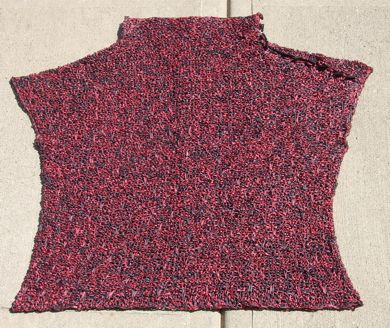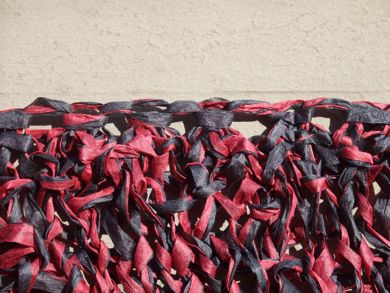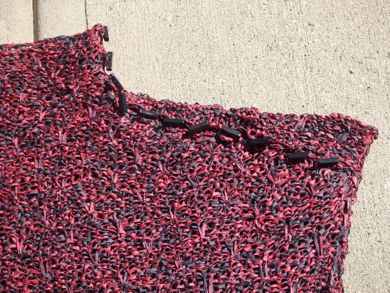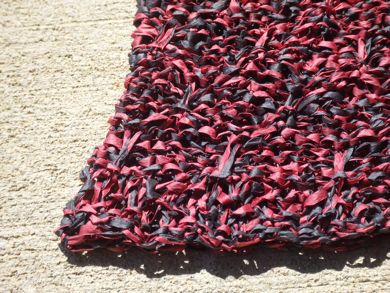
content: 2 strands of A-60 in Red and Charcoal
Negative: This is the first time that I have purchased yarn from Habu and it was full of knots of broken threads. There were so many I didn't want to count.

The Estonian Cast on edge really reminds me of the paper loops you make as a kid for a toy necklace. The best thing about it though with three rows of moss stitch it created a flat professional edge.

11 Buttons from Olga with crochets button holes

Though the one question that I really had while knitting the pattern is whether a 1 thread raised stitch would have worked better than a slipped stitch with the way that I knit.

When I first started the sweater I talked with Olga to see if I was missing something with the way that I was doing my stitches. The close up of her stitches , click here appeared more like a honeycomb while mine looked a lot less polished.




